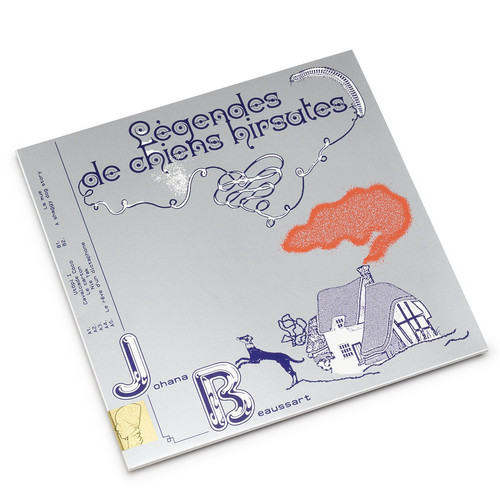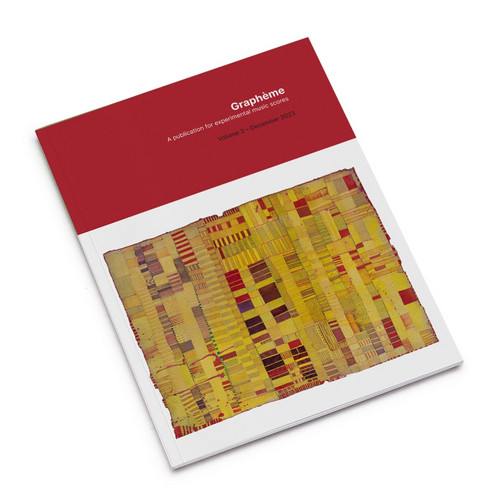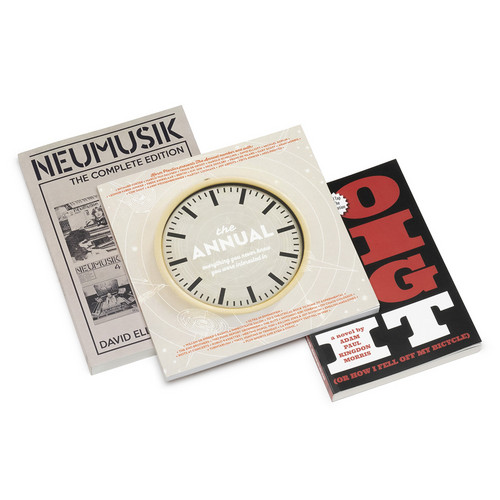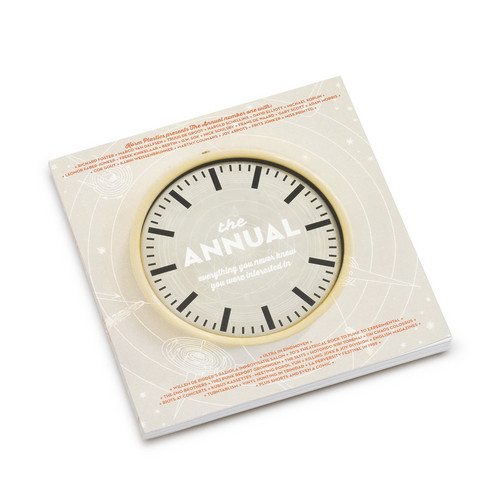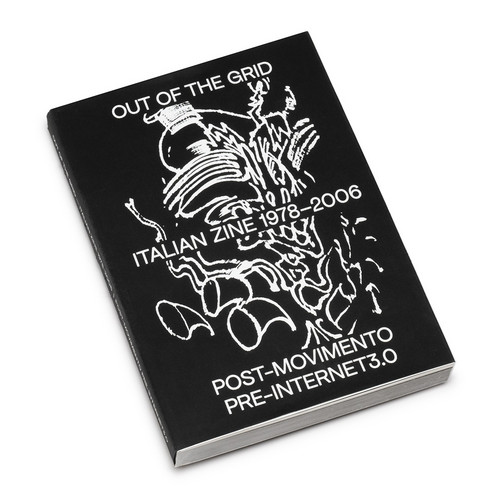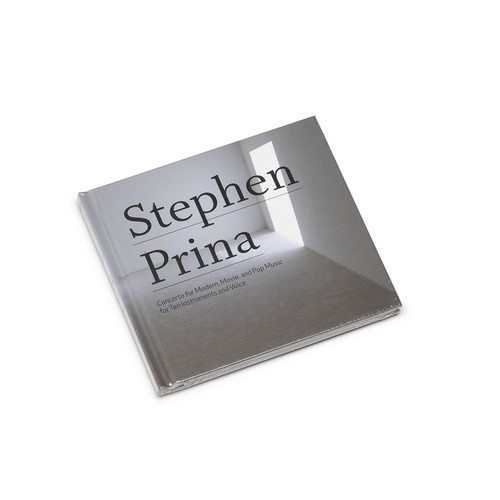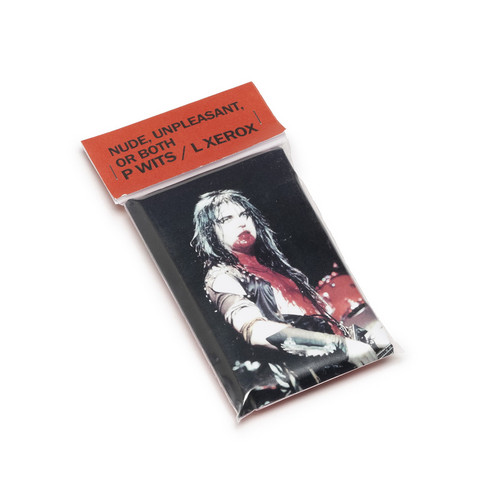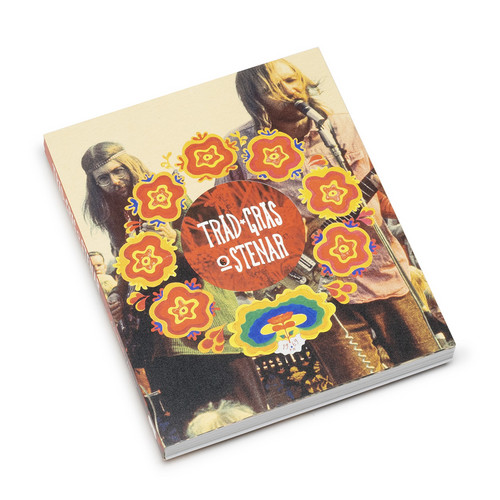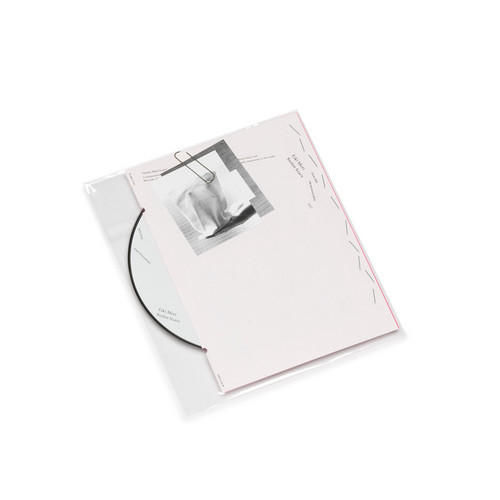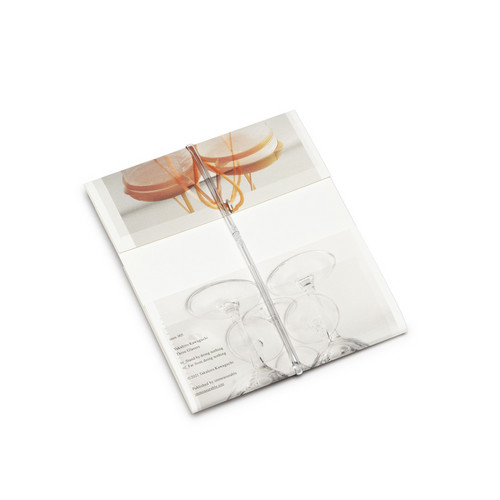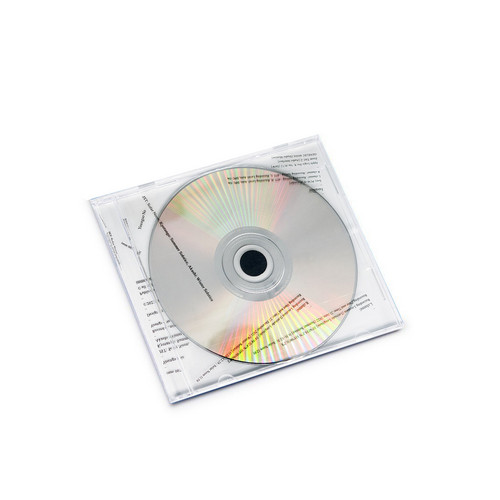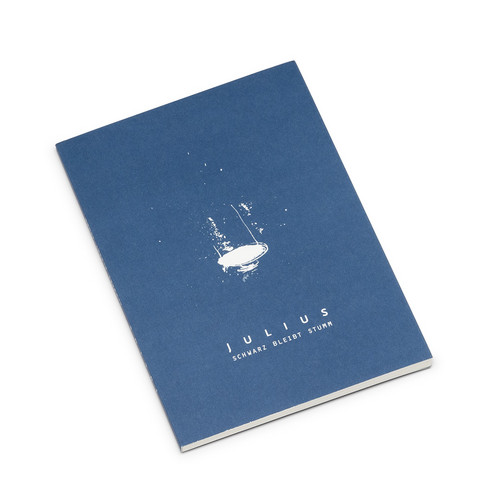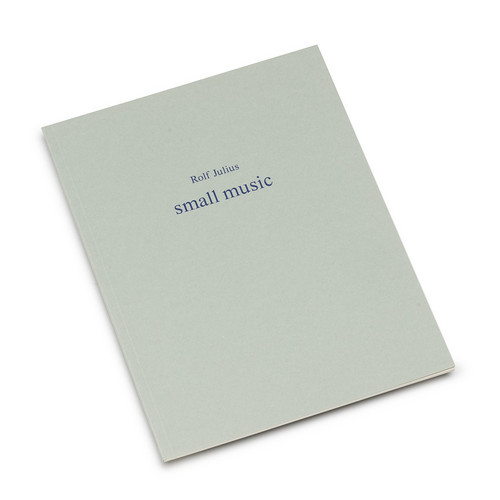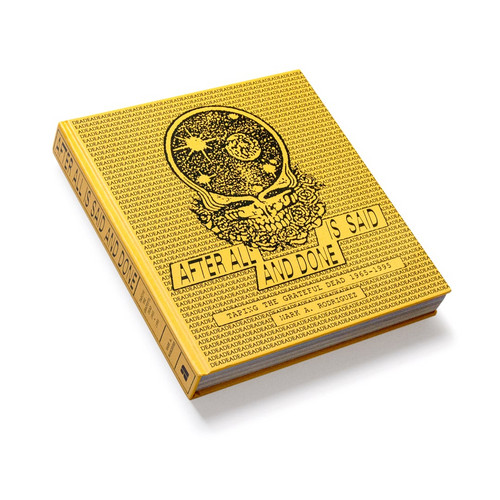Legendes de Chiens Hirsutes
**300 copies. Black vinyl, three layer silkscreened covers and paste on sticker. Stamped labels.* After two years of hard work we are extremenly proud to announce Johana Beaussart's new album on glorious vinyl. In the footsteps of her self-released debut album "Kolokoksta" (available in our backdoor shop) expect a journey into another audio sci-fi adventure, this time around built into distinct, thrilling chapters.Beaussart has hit bull's eye with this record, needless to say she is fire startin…
Graphème Vol.3 (Book)
We are proud to present to you the third edition of Graphème: another series of graphic and experimental music scores by composers from a variety of backgrounds and experience. Each composer offers a rigorous conceptual framework and provides an often sensual dialog between composer, performer, sound and space in spirit of collaborative creativity.
The pieces here represent imaginative and inventive ways to notate a musical vision, making use of innovative approaches – photographic representatio…
The Annual / Neuemusic / Losing It (3 Books Bundle)
** The three recent Korm Plastic books in a special discounted bundle ** Since their relaunch in 2019 as (primarily) a publisher of books, the legendary Dutch imprint Korm Plastics - founded in 1984 by Frans de Waard - has been blowing our minds with incredible volumes roughly attending the music scenes to which they belong. Three of their latest - “The Annual 2023”, “Neumusik - The Complete Edition”, and Adam Morris' "Losing It" - take this momentum up a notch. Taking markedly different approac…
The Annual 2023 (Book)
Softcover, 196 pages, 21x21 cm Korm Plastics founder Frans de Waard teamed up with designer Alfred Boland for this, their latest publication, The Annual. For a long time both had wanted to publish a magazine, which eventually became what they hope will be a regular yearbook with ‘everything you never knew you were interested in’. They invited their authors (present and future) to contribute an article, which led to a wildly diverse selection. From the history of turntablism, a 1985 interview wit…
Out of the Grid – Italian Zine 1978-2006
Huge Tip! Large format, 400 pages Out of the Grid presents a critical selection of 100 Italian zines from 1978 to 2006 that display a broad spectrum of social, political, aesthetic, and technological changes in the use of language and communication strategies across the territory of self publishing.
Widely mapping Italian society, particularly youth culture—over an extended period that can be symbolically defined as the "post-movement" and "pre-internet3.0"—, this outpouring of creativity gave v…
Concerto For Modern, Movie, And Pop Music For Ten Instruments And Voice
Artist's book / exhibition catalogue and audio CD published in conjunction with "Concerto for Modern, Movie, and Pop Music for Ten Instruments and Voice" a concert by Stephen Prina held at Contemporary Art Museum St. Louis, March 18, 2010 and a screening of two films by Prina held March 19, 2010.. For 30 years, Stephen Prina (born 1954) has enjoyed a simultaneous career as a visual artist and as an acclaimed musician, both under his own name and with The Red Krayola. Having kept his artistic int…
Nude, Unpleasant or Both
*20 copies limited edition* Off-set printed covers in zipper bags, with stapled info card. Dubbed on red cassettes. Limited to 20 copies.
Strains from a Room
*20 copies limited edition* Xeroxed print on orange paper. Transparent cassettes. Limited to 20 copies. Gloomy lyrics meet delicate melodies and dreamy soundscapes
Trad, Gras Och Stener: A Collective History (Book)
Huge Tip! 400 pages, 387 Images. The story of the legendary Swedish psych rock band Träd, Gräs och Stenar is also a defining story of alternative culture. Across multiple incarnations, the musicians of this iconic group (whose name translates to “Trees, Grass and Stones”) have drawn on their roots in jazz and the avant-garde, the iconoclastic art and theater of the 1960s, and the back-to-the-land “green wave” movement to blaze a pioneering trail across fifty years of endlessly improvisational, r…
Stolen Scars
The five-channel sound installation "Stolen Scars" by Eiki Mori was exhibited in the "Takamatsu Contemporary Art Annual vol.10 There Is No Boundaries Here./?” at the Takamatsu Art Museum from February 11 to March 21, 2022. And this is the documentary soundtrack of that work.
“There is a boy who has been deeply hurt, heartbroken and has not recover yet. You can’t talk to him or rub his back. Instead, you can only ring this bell for him.”
When Mori created "Stolen Scars,” he first sent a handbell …
Three Glasses
Composed by Takahiro Kawaguchi. Performed by Shinjiro Yamaguchi, Satoshi Kanda, Kanako Kawaguchi and Takahiro Kawaguchi. Droplets of water are set to drip from three infusion containers suspended from the ceiling, each at a different speed. Each of the three players produce sound by rubbing with their fingers a wine glass that catches the droplets from one of the containers, with the scale changing according to the amount of water that accumulates. The first track documents this process for te…
JST: Solar Noon, Kyotango: Summer Solstice, Akashi: Winter Solstice
Solar noon is the time when the Sun appears to contact the local celestial meridian. This is when the Sun reaches its apparent highest point in the sky, at 12 noon apparent solar time. *However the local or clock time of solar noon depends on the longitude and date. The summer solstice is the day with the longest period of daylight of the year. The winter solstice is the day with the shortest period of daylight of the year. Time and Space, UTC and JST, North and South, East and West, Left and R…
Piipiipii
**Very few copies available. Edition of 20 copies. It comes with waterproof mp3 player, headphones and cable. Includes several photos taken as a diary during the performance** Salad is a collaboration between Tsume, who makes background music in Niigata Prefecture, and Masami Baba, who accumulates environmental sounds in Hyogo Prefecture. Using the environmental sounds flowing in the place and improvised sounds, we change the sound pattern. The change of sound will take place all day and will co…
Rot - Oder wie Laut ist Schwarz?
English/German. Kunsthalle Fridericianum between 1 April and 10 June, 2001. The booklet includes many images, a foreword in German by René Block; an essay entitled "Pictures of Sounds" by Volker Straebel in German with a side-by-side translation by George Goodman; a transcription of a conversation between Julius, Straebel and Aki Takahashi in English; Julius' chronology up to 2001, in German; and credits in German
Für den Blick Nach Unten (Book)
German/English. First edition. Softcover. 36 pages. Exhibition catalog for a show that ran March 11 through April 22, 2007. From the exhibition press release Rolf Julius is one of the most important representatives of contemporary sound art. His nuanced, mostly small-format sound installations explore the visibility of sounds, the audibility of images and the aesthetic and ontological potential of silence in the most subtle way. Since the 1960s, Julius, a constant border crosser between music a…
Schwarz Bleibt Stumm. (Book)
German, English. Rolf Julius's rare exhibition catalogue. Paperback, 22 cm, 79 pp. Ills.: b/w and color illustrations.
Wind (Artist' Book)
English/Japanese. Small naked speakers, iron plates, glass plates, and sand were some of the materials Rolf Julius used to create a sound space. The sky-like tranquil space was filled with whispering electronic sounds that somewhat resembled the songs of crickets.
Small Music (Book)
Rolf Julius has frequently been compared to John Cage for his attempts of integrating the world of common noises into the realm of sounds. "The surface of a sound interests me. Is it round or angled, grinding and raw, or smooth, etc." Julius thus creates extraordinary sound installations which can be described as "music for the eyes" and have secured him an unmistakeable place in the spectrum of contemporary art.
Walzer Für Ein Dreieck
Art-Record / Handmade Art Edition of 100 Copies in Box with 4 Prints & 2 Inserts. This is the first vinyl record by the legendary Rolf Julius (1939-2011) whose work is largely focused on “small music”, or sounds so subtle they’re barely discernible. One of the most significant artists in the border areas of music and fine art, Julius, like John Cage, works with the term of "silence", and sound is a liminal listening experience. The sounds in Julius' works have spatial and physical qualities such…
After All is Said and Done: Taping the Grateful Dead, 1965-1995
If any one musical act of the rock and roll era can be said to have transcended the simple categorization of “band,” the Grateful Dead is it: by the time they stopped performing in 1995, the Dead had become an international institution with a vast backing organization, a massive and devoted fanbase, and archival recordings both official and bootlegged. The cultural significance of these bootlegs—live concert cassettes which solidified the Dead’s legendary status even as they occupied a legal gra…
